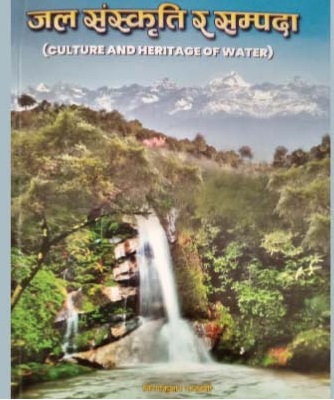
Water Culture and Heritage Book Launched in Kathmandu
The book Water Culture and Heritage by Niran Kumar Rajbanshi, which explores the interdependent relationship between water and culture in Nepali society, was released on Friday in Kathmandu. The book was unveiled by culture expert Hariram Joshi.
Speaking at the event organized by the National Museum, cultural expert Joshi noted that very few books have been published on water culture and heritage. He commended Rajbanshi's effort in documenting the subject through this publication.
Joshi emphasized that water is as essential to human life as a mother's milk is to a child, underlining the critical role water plays in culture and survival.
Water as a Core Element of Nepali Culture
Dr. Suresh Suras Shrestha, Head of the Culture Division under the Ministry of Culture, Tourism, and Civil Aviation, stated that water has become an integral part of Nepali culture and also forms the foundation of human civilization. He expressed hope that the inclusion of records related to water in the book would support further studies.
Significance of Traditional Water Preservation Practices
Aruna Nakarmi, Head of the National Museum, remarked that the book details traditional methods and practices for water conservation in Nepali society. She noted that Water Culture and Heritage will be useful for a wide audience.
Urban development expert Padma Sundar Joshi discussed the various cultural traditions linked to water sources in Nepal, including Sithi Nakha, Gatha Muga, and the Rato Machhindranath Jatra. He pointed out that the book mentions these rituals as ways of seeking rain from deities during dry periods.
Broader Insights Offered by the Book
He further explained that the book includes information on the sacred Bagmati, Bishnumati, and Manohara rivers, along with local ponds and water systems. It provides insights into the religious festivals, rituals, and pilgrimages associated with water across Nepal.
Joshi added that the book discusses the images and sculptures of water deities like Ganga and Jamuna often depicted in temple toranas. He noted that it includes historical evidence related to water practices.
A Valuable Addition to Cultural Literature
Prof. Dr. Purushottam Lochan Shrestha stated that this book on water culture is a valuable collectible for readers and scholars.
Author Niran Kumar Rajbanshi shared that the book was written to shed light on Nepal's cultural practices for water conservation. He emphasized that in today's context, where water sources are being overused and river culture is deteriorating due to pollution, such documentation is crucial. He expressed confidence that the book would contribute to the movement for water conservation in Nepal.


